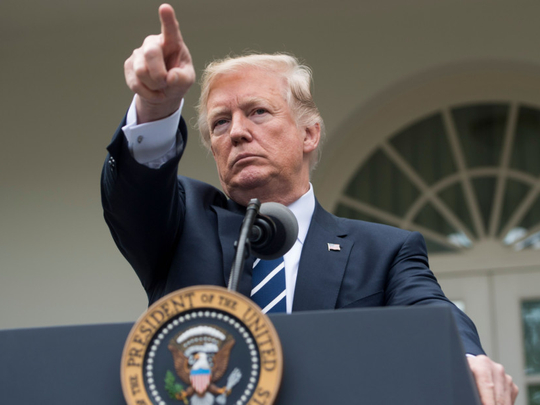
Canada, Mexico and the United States belong to a North American neighbourhood, and all three countries benefit from being strong and prosperous. North America is at a crossroads, with scepticism about the virtues of the North American Free Trade Agreement(Nafta) and the US’ relationship with its neighbours. That scepticism disregards the considerable competitive advantage the agreement has given the US and, in turn, transformed North America into a global powerhouse.
Nafta was signed in 1993, when the economy was much simpler. We have a unique chance to take advantage of three countries meeting at the negotiation table in order to modernise the accord and to make it, once again, the world’s state-of-the-art trade agreement. To maintain North America’s competitive edge, we have three ideas to update and improve Nafta, rather than simply discarding it.
First, the digital economy hardly existed in 1993; now it is a big part of the global economy and has to be incorporated into Nafta. That will benefit all companies, in particular small and medium enterprises that will use the internet to export to the region and worldwide.
Second, reform Nafta regulations concerning state-owned enterprises. Competition from these companies — often government-subsidised — is often unfair; a clause in Nafta regulating the participation of state-owned firms in North America would serve as an argument in favour of including a similar clause for World Trade Organisation rules. That would level the playing field in global trade for the three Nafta countries; the largest binational commercial deficit for each one is with China, which openly supports its state-owned companies.
Third, government procurement in the three countries must be open to competition, with any North American company able to bid for jobs. In addition, severe measures to combat corruption should be added to the agreement.
Being part of the North American free trade zone has helped US manufacturing industries like auto, electronics and aerospace become more competitive, relative to their Asian and European competitors. This increased competitiveness results mainly from the development throughout the last 24 years of strong vertical supply chains that take advantage of economies of scale: Production takes place wherever it is most efficient. National borders matter relatively little, and final assembly generally has little to do with the national origin of the parts being assembled. Today, US and Canadian manufacturers rely on Mexican suppliers to remain competitive and to be able to export their goods globally. We hear a lot about trade deficits, but repealing trade agreements will not fix the arithmetic. If a country consumes more than it produces, it will import more than it exports. Federal deficit spending, a huge and continuing act of dissaving, is the big culprit. Control that, and you will control trade deficits.
Imposing tariffs on trade within North America would affect the demand and price of final goods imported by the US from Mexico and Canada. It would also affect the demand for intermediate goods produced in the US that are exported to Mexico and Canada for final assembly. In a ha recent study nearly 40 per cent of US imports from Mexico were US value-added, while about 25 per cent of US imports from Canada were US value-added. Top categories for US exports to Mexico and for US imports from Mexico: vehicles, machinery and electrical equipment. North American products cross borders often before reaching the consumer. Disrupting supply chains would have consequences not only for Mexico and Canada but also for United States exports.
North American countries should be working toward greater integration in energy and national security. When Nafta was first negotiated, the energy sector was excluded because Mexico’s oil, gas and electricity industries were controlled by the state. But in recent years, Mexico opened up the sector to competition and foreign investment. The three countries should push toward an integrated North American energy market; that will favour the energy independence and national security of the region.
The US, Mexico and Canada should secure the true border of North America: Mexico’s southern border. One argument from the Trump administration to repeal Nafta is illegal immigration from Mexico to the US and the effect it has on its workers. The truth is that a net migration from Mexico to the US has been zero or even negative for roughly 10 years. If the US wants to do something about illegal immigration, it must pay attention to the condition of northern Central America.
— New York Times News Service
George P. Shultz, a secretary of the Treasury in the Nixon administration and secretary of state in the Reagan administration, is a fellow at the Hoover Institution at Stanford. Pedro Aspe is a former secretary of finance in Mexico.












